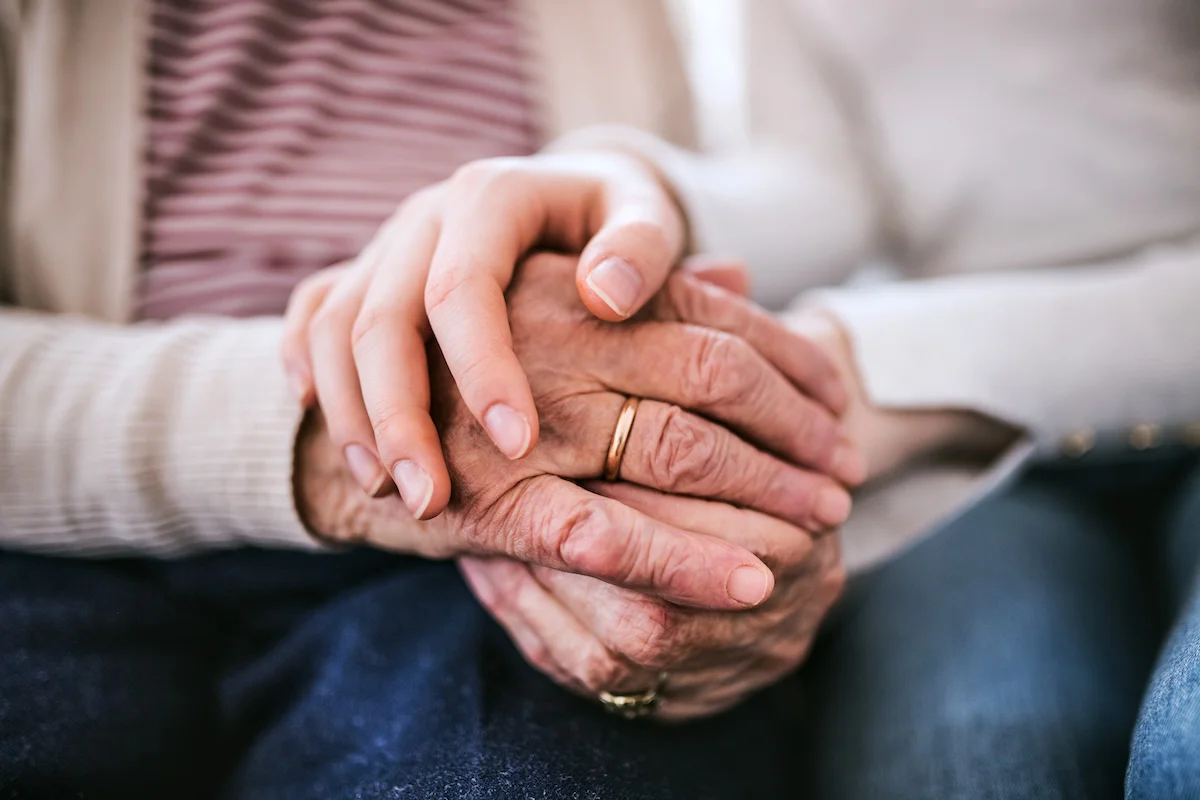
Keeping Loved Ones Secure With Safety Measures in Memory Care
Although many people living with memory loss choose to age in place at home or with family members, another great option for dementia care is a memory care community. Memory care communities offer specialized services like cognitive therapy and personalized care plans in a safe and supportive environment, with staff who receive additional training in dementia care techniques and communication.
Families can have peace of mind, knowing that loved ones are secure and have access to assistance at all times, day and night. Which safety measures do memory care communities like Solterra Senior Living’s Chandler memory care community have in place?
The following article outlines the multifaceted approach high-quality memory communities take to address their residents’ safety. Advanced monitoring systems, environmental modifications, staff training programs, and other strategies work together to prevent accidents, ensure a secure living environment, and help residents thrive.
If you are considering a memory care community for your loved one, the information outlined below can point you in the right direction, knowing what questions to ask and what services to look for as you choose the right fit for your family.
Monitoring Systems
Knowing where residents are at all times is important, especially for those with dementia who might be prone to wandering or becoming confused occasionally. In memory care communities, a standard safety measure employed to address this concern is video surveillance of common areas like dining rooms, hallways, outdoor areas, game and media rooms, and entrances and exits. Staff can keep track of residents’ activities and respond immediately if any assistance is needed.
In some cases, communities might also incorporate wearable devices into their monitoring systems. Some popular choices are small, lightweight devices worn as bracelets, watches, or on a necklace or belt clip. These devices have GPS tracking capabilities and can alert staff if a resident goes beyond certain designated safe zones. Some can even monitor for falls.
Finally, simple motion sensors placed near exits, windows, or potentially hazardous areas (e.g., medication storage) provide an additional layer of safety for residents. They alert staff if a resident approaches these zones. Staff can intervene quickly to assist and redirect the resident to a more appropriate area.
Environmental Modifications
Memory care communities rely on various environmental modifications, such as physical security measures, design adaptations, and safety equipment, to provide a secure physical environment for their residents.
Secured Entrances and Exits
Every memory care community controls access through secured entrances and exits, which prevents non-residents from unauthorized access to the community and also reduces opportunities for residents to wander unsupervised. Often, doors have electronic locks that require a numeric code or key card. Windows and balconies are locked or otherwise secured for even more security and to help prevent potential falls or accidents.
Dementia-friendly Design Adaptations
A growing body of research continues to show the benefits of dementia-friendly layout and design adaptations in the care environment. Some of the most common design modifications include:
- Non-slip flooring and handrails: Ensuring that all flooring is secured and easy to navigate (i.e., no loose rugs or thick carpeting) and including handrails in hallways and other areas dramatically reduces the chance of slips, falls, and accidents.
- Clear signage: Using a color-coding system, high-contrast colors, and simple pictures can reduce confusion and help residents maintain independence as they move around the community without staff assistance. Labeling all rooms and doors with both words and pictures is helpful.
- Secure outdoor spaces: Spending time in nature, fresh air, and sunshine is important for every person’s mental health. Memory care residents are no different. To accommodate this need, many memory care communities have walking trails, outdoor courtyards, or other contained and secured areas to ensure residents can always find their way back easily and don’t move beyond the community’s safe zones.
- Illuminated doorways: Well-lit entrances, exits, and hallways are essential for seeing where you are going and avoiding tripping hazards. For memory care communities, this means using appropriate lighting that is neither too dim nor too bright. Motion-sensing lighting can also be helpful near doorways and walkways to ensure there is always light whenever someone enters, exits, or moves between common areas.
- Soothing environment: To reduce potential agitation and stress on residents, memory care communities create a calming environment using restful, peaceful art, such as nature scenes, simple patterns for wallpaper, and decorative accents, like pillows.
Safety Equipment
One of the greatest benefits of a memory care community is the 24/7 access to assistance from trained and compassionate staff. By installing personal emergency response systems in every private apartment and common area, every resident can request help with the touch of a button, night or day.
Assistive safety equipment, such as grab rails, bathroom seating, and handrails in hallways and walkways, is generally installed throughout the community to minimize falls and accidents.
Staff Training
Many memory care communities employ certified dementia caregivers and provide additional training to equip staff to address challenges specific to caring for residents with memory loss, including wandering, confusion, or agitation. Learning about dementia and effective and alternative communication techniques and methods of care empowers staff to provide the best support possible. Other training can include crisis prevention to de-escalate stressful situations and emergency response.
Additional Memory Care Strategies
In addition to monitoring systems, environmental modifications, and staff training, memory care communities incorporate other strategies to keep residents safe. Individualized, personal care plans allow staff to tailor activities, diet, medication, exercise, cognitive and other therapy, assistance with activities of daily living, and structured routines and schedules to meet the needs of each resident as an individual.
Transparent and frequent communication with family members is also vital, especially as care needs change. Taking a collaborative approach to care is in the best interests of the residents but also the family, allowing them to be part of the decision-making process.
Solterra Senior Living’s Chandler memory care community is dedicated to caring for the whole person in a safe and supportive environment. We understand your loved one’s safety and security are essential to you. If you would like to see us in action, call or email us today to schedule a tour or ask any questions you might have about how we work to keep our memory care residents safe.
